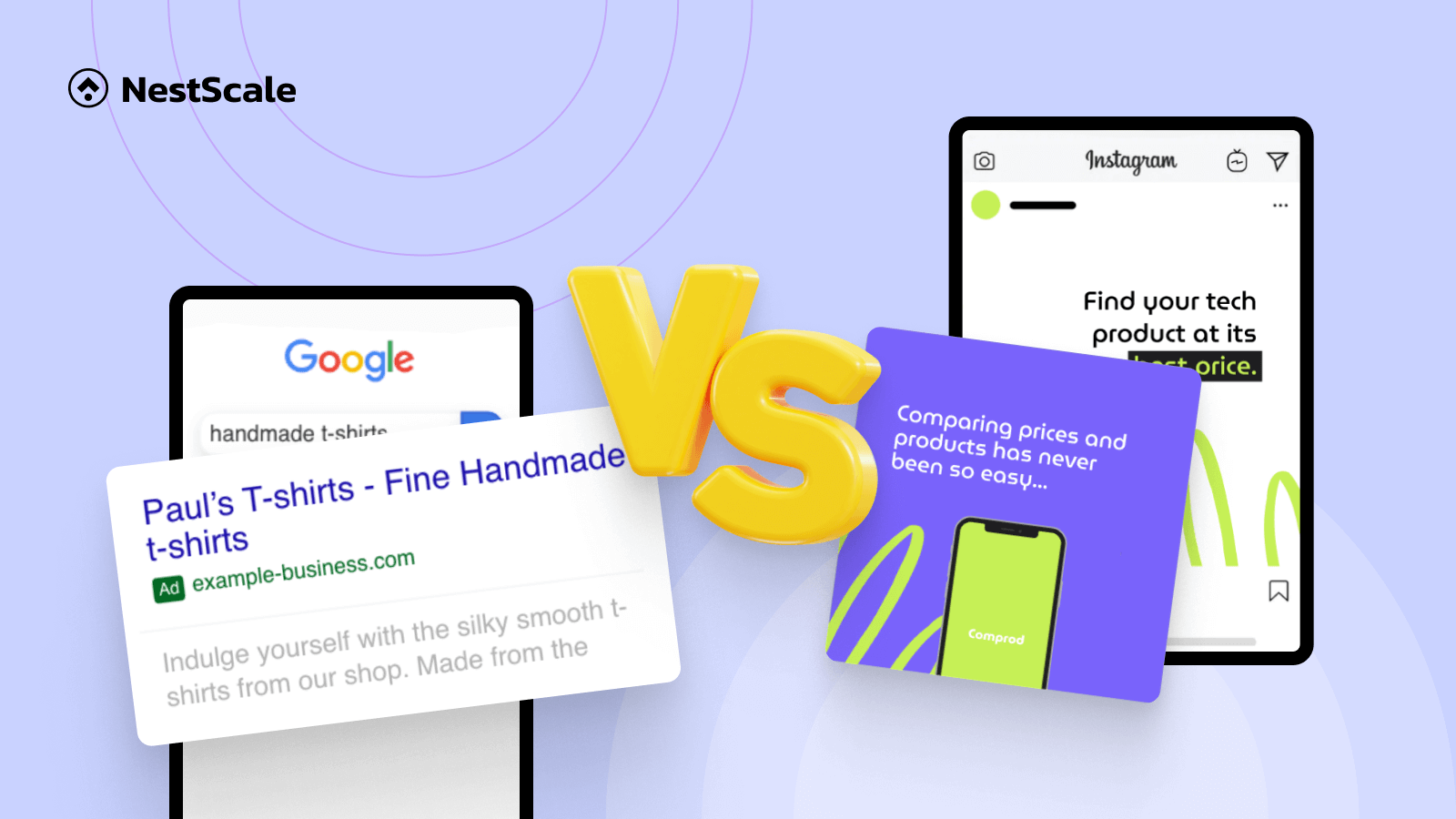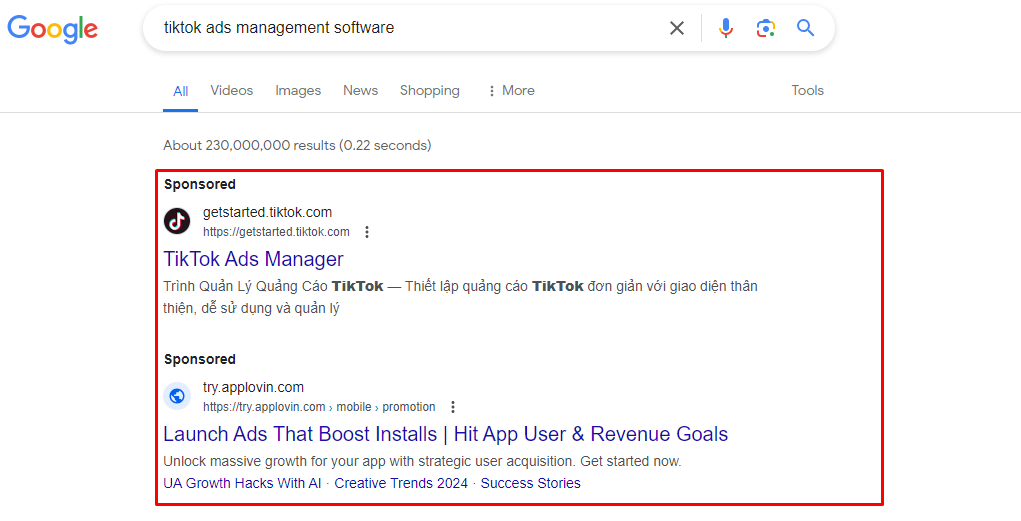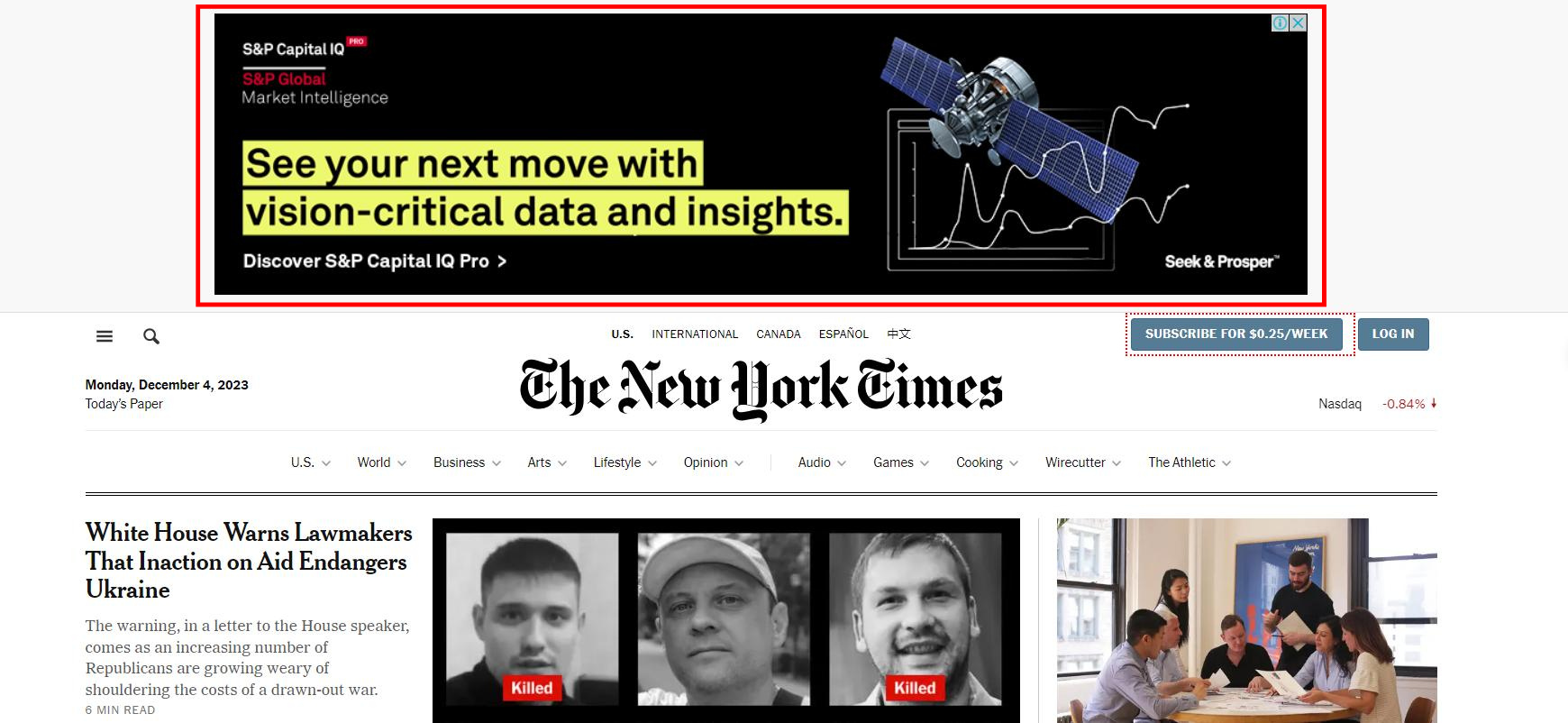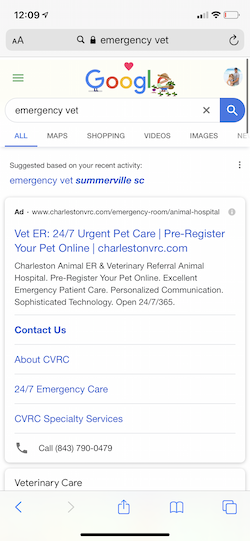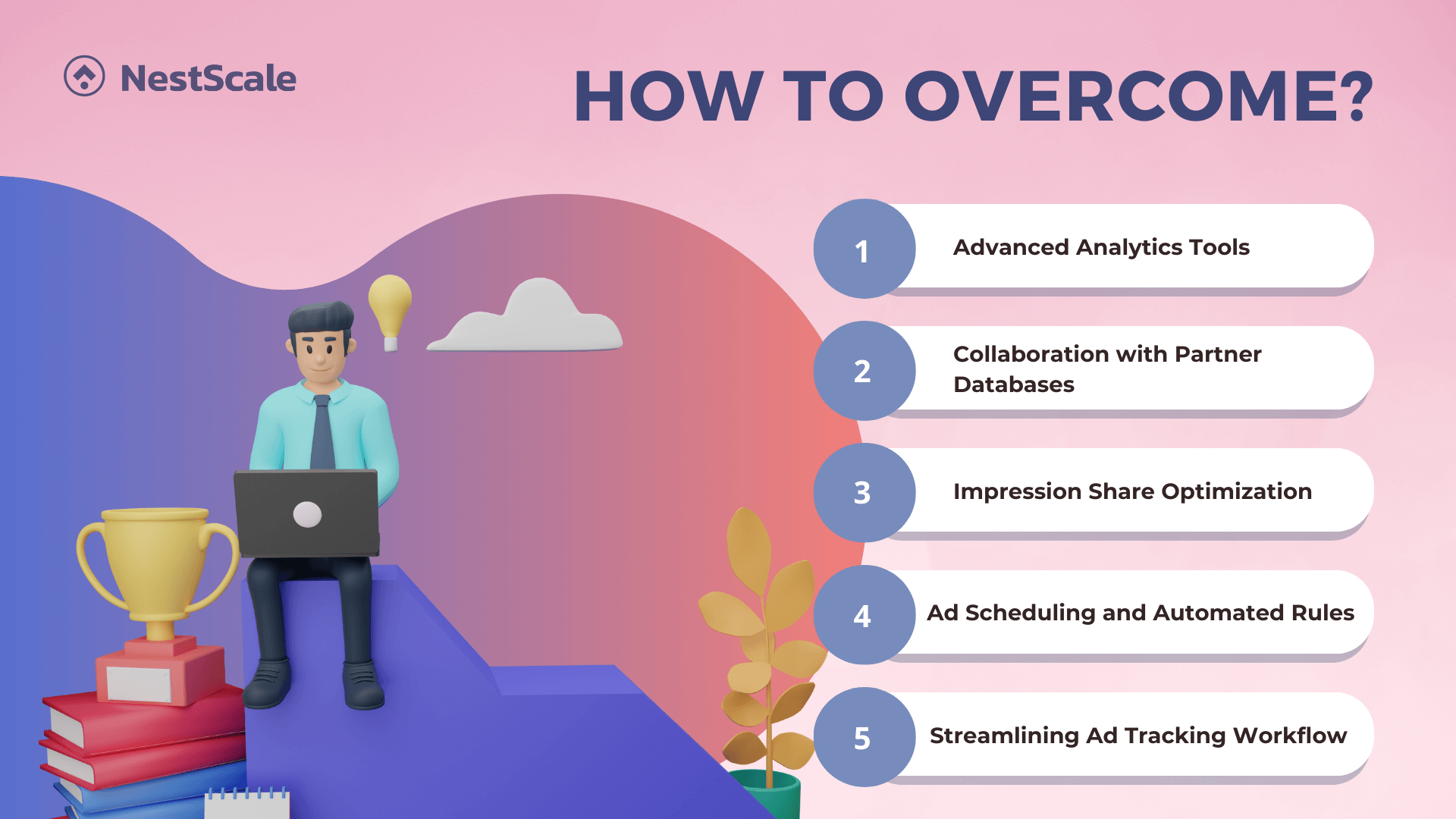Navigating the world of online advertising involves making smart choices, and a key decision is whether to go for Google Search Ads vs Display Ads. This guide breaks down these ad types, highlighting what makes them tick and the crucial differences between them. We’ll walk you through when to use Search Ads or Display Ads based on your goals. Moreover, we’ll discuss the challenges each type poses and share practical tips on overcoming them.
Join us as we simplify the choice between Google Search Ads and Display Ads, empowering you to make savvy decisions for successful online advertising.
What are Google Search Ads vs Display Ads?
Search and Display Ads are among the most popular Google advertising types that businesses us to promote their products. However, before we explore the differences between Search Ads vs Display Ads, it is pivotal to establish a foundational understanding of the unique characteristics inherent to each type of advertisement. Gaining insight into the fundamental aspects of these ad formats lays the groundwork for a more comprehensive analysis, so let’s get started!
Google Search Ads
Search Ads are one of the PPC (pay-per-click) online advertising that appears in the search results pages of search engines like Google. They are typically text-based and are designed to appear in response to a specific keyword search.
The goal of Search Ads is to provide users with relevant information or products that match their search query. By using Search Ads, you can attract your potential customers by targeting those actively searching for products or services based on their search history. It will boost not only your website traffic but also draw visitors to your physical store.
Google Display Ads
Display Ads, appearing on websites, apps, or platforms, utilize banners, videos, or native formats to visually engage users. Aimed at prompting clicks and encouraging exploration or purchases, these ads offer a cost-effective alternative in the PPC advertising landscape. We can say that using Display Ads is for budget-friendly plan, with lower costs and reduced competition compared to Search Ads, reaching over 90% of site users for maximum impact.
Differences between Google Search Ads and Display Ads
Let’s dive into the distinctions between Google Search vs Display Ads and provide valuable insights into their respective mechanisms and performance metrics. We will unpack how these advertising avenues function and the metrics they prioritize are essential for businesses looking to enhance their online visibility and connect meaningfully with their audience. So that to elucidate the nuanced strategies needed for each platform, empowering businesses to make informed choices in navigating the realm of digital advertising.
Comparing how they work
Based on our understanding of their definitions, we’ve observed several distinctions between these two ad types. Let’s now explore the difference between Search Ads and Display Ads.
Comparing their average metrics
When comparing the metrics of Search Ads and Display Ads, two key factors to consider are the Conversion rate (CVR) and Cost-per-click (CPC). The industry benchmarks for these collected from our customers can differ significantly between the two advertising platforms.
Average conversion rate (CVR)
Search Ads generally have a higher conversion rate, with an average of 4.40% across all industries. This is largely due to the nature of the Search Network, which connects advertisers with individuals who are actively searching for products. This indicates a higher intent to purchase, increasing the likelihood of conversion.
On the other hand, Display Ads have a significantly lower average conversion rate of 0.57%. The highest conversion rate for Display Ads (1.12% for hobbies & leisure) still falls short of the lowest conversion rate for Search Ads (2.77% for apparel). This indicates that Search Ads are more effective at driving conversions.
Average cost-per-click (CPC)
In terms of cost, while the average conversion rate for Display Ads is lower, the average CPC for Display Ads is also lower. For Search Ads, the average CPC is $2.41, while for Display Ads, it is only $0.59. This means that Display Ads can be a more cost-effective option for brands looking to save on ad spend.
However, each brand has unique business goals, and the choice between Search Ads and Display Ads should be based on factors such as the target audience, advertising objectives, and the nature of the product or service.
While Search Ads generally have a higher conversion rate, Display Ads can be a more cost-effective option. The choice between the two should be based on the specific needs and goals of the brand.
Pros and Cons of using each type of ads
While Search Network vs Display Network has their unique benefits and limitations, understanding when to use each option, how much to invest in each, and how to optimize them for success is key to a successful Google advertising campaign.
Search Ads
Diving into Search Ads reveals both perks and challenges. They excel in precise targeting and measurable results, but the trade-off may be a narrower reach. Let’s explore their advantages and disadvantages with your business.
| Pros | Cons |
| Suitable for businesses with smaller monthly budgets, providing more control over targeting and timing | Managing ad scheduling for multiple search engines and accounts can be challenging |
| Focus on specific keywords helps capture users actively searching for your product or service | Higher CPC compared to Display Ads |
| Convert high-quality leads as Search Ads are displayed to users who are actively searching for products or services | May not be as effective in building brand awareness as Display Ads |
Display Ads
In regard to Display Ads, using them sometimes brings forth a mix of advantages and considerations. While they excel in capturing attention through visual appeal, potential challenges lie in measuring direct conversions.
| Pros | Cons |
| Be a powerful strategy for visually oriented products like clothing, cars, beauty, and pet care | Can have technical glitches across multiple devices |
| Build brand recognition, drive top-funnel traffic, and establish brand equity for bussinesses | Need to focus on quality over quantity and offer personalized experiences to improve consumer engagement |
| Reach a broad audience without having to consider specific search terms | May not be as effective in driving conversions as Search Ads |
| Less expensive because they have a lower conversion rate |
When do we use Search Ads or Display Ads?
The choice of when to use between search advertising and display advertising is pivotal, contingent upon your business objectives and target audience. Selecting the right ad type that suits your business situation and aligns with these factors ensures a personalized approach, maximizing the effectiveness of your advertising strategy.
When to use Search Ads
Using Search Ads is a strategic decision that depends on specific marketing objectives, target audience behaviors, and the overall context of your campaign. Here are key situations and objectives where implementing Search Ads is particularly beneficial:
When promoting specific products or services
If you want to highlight a particular aspect of your offering or push certain products/services at strategic times (e.g., seasonal promotions, sales), Search Ads allow for targeted and timely marketing.
For instance, if you’re a travel agency, utilizing Search Ads allows you to target users searching for travel deals or specific destinations. This type of ad ensures that your message reaches users with immediate intent, increasing the likelihood of engagement.
To increase visibility for local businesses
Localized Search Ads can drive foot traffic to physical stores by appearing to users searching for nearby solutions, making them essential for local marketing strategies.
Targeting a global audience through Display Ads may not yield significant benefits if your audience is small and highly specific.
For promoting time-sensitive offers or urgent products
If you’re running a sale or an event that requires immediate attention, Search Ads can quickly capture the interest of relevant audiences due to their prominence in search results.
For example, providers of urgent or emergency services—such as plumbers, locksmiths, tow trucks, emergency veterinarians, and electricians— should initiate your advertising with Search Ads. Given the likelihood that these urgent searches will be conducted on a mobile device, incorporating call extensions in your ads simplifies the process for the user in distress, enabling them to contact you with ease.
To capture high-quality leads
If your goal is to generate immediate sales, leads, or conversions, Search Ads can effectively capture the attention of users already interested in similar offerings.
In search ad campaigns, leveraging various keyword match types enables you to activate your ad based on certain search queries, while employing negative keywords prevents your ad from appearing in response to searches that are not relevant to your business. This approach ensures your ads are finely tuned to align with a user’s search intent.
For boosting organic traffic
For some companies, waiting for SEO efforts to bear fruit isn’t a feasible strategy due to time constraints. Unlike organic search, which often emphasizes comparative content, Search Ads quickly direct users to immediate solutions. Therefore, search advertising serves as an effective short-term approach alongside ongoing efforts to enhance organic visibility.
When you have a short sales cycle
For products or services with a short sales cycle, Search Ads are optimal since there’s less need for ongoing advertising (remarketing) to individuals who have already interacted with your brand. To measure the performance of your search ad campaigns, tools like Google Analytics come in handy. Keep an eye on essential metrics such as Google Ads CTR, conversion rate, and ROAS to assess and enhance the effectiveness of your campaigns.
When to use Display Ads
Display Ads serve a different purpose and function compared to Search Ads, making them suitable for specific scenarios and marketing objectives. Here’s when you might consider using Display Ads:
When visual appeal is key
If your product or service benefits from visual representation (such as fashion, travel, food, or art), Display Ads can showcase your offerings with images, videos, and graphics, making a stronger impact.
For example, if you operate an e-commerce store, deploying Display Ads allows you to showcase your products to users exploring your site.
Note: Google has streamlined the process for advertisers to launch video campaigns, particularly benefiting those who already possess video creatives.
To generate awareness of the audience with passive intent
Display Ads excel at reaching individuals who may not be actively seeking a product or service but are in the early stages of exploring their options. These potential customers are likely in the discovery or awareness phase, with a more passive intent towards making immediate purchases.
The display network is thus ideal for generating interest and demand for your offerings, even if consumers aren’t yet aware they need them. It’s about nurturing a sense of desire and necessity, rather than leveraging an existing demand as search networks do.
To reach niche markets
Display Ads are effective in fostering brand awareness, largely because they appear on websites frequented by potential customers. With Google’s ability to align your keywords and ads with appropriate web pages across its extensive Display Network of over 2 million sites, targeting niche markets becomes straightforward.
To re-engage visitors who left your site
Display Ads serve as a powerful tool for retargeting, effectively re-engaging users who visited your site without making a purchase or taking a specific action. They act as gentle reminders that nudge these visitors back towards your website, potentially converting them into customers.
As part of a broader marketing campaign
Furthermore, Display Ads are a crucial tool for enhancing brand recognition and disseminating content or products beyond mere search engine results. Their utility spans across social media platforms and mobile applications, offering a superb avenue for engaging with your target audience across diverse digital environments. This broadens the scope of your advertising efforts, enabling you to connect with potential customers in the spaces they frequent most.
When you have a longer sales cycle
If your product or service entails a longer sales cycle, often characterized by the need for multiple interactions or retargeting, Display Ads are highly suitable. This scenario is typical for significant investments or complex decisions, such as purchasing a car, enrolling in higher education programs, or acquiring enterprise software.
In these cases, potential customers usually take more time to research and consider their options before making a purchase, making Display Ads a valuable tool for maintaining visibility and engagement throughout the extended decision-making process.
How to overcome these challenges?
Mastering digital advertising means overcoming challenges in both Google Display Ads vs Search Ads. It’s about using smart strategies and creativity. Let’s explore how to tackle these hurdles and boost your ad game.
Collaboration with Partner Databases
Establish collaborations that offer access to demographic data from trustworthy databases. Incorporating this external information into your strategy yields valuable insights, aiding the refinement of display ad campaigns through a more profound comprehension of your target audience.
Impression share optimization
Enhance impression share by strategically adjusting bids, budget allocations, and ad quality. This optimization can result in increased impressions and click volume, contributing to a higher conversion rate and improved Return on Ad Spend (ROAS).
Ad scheduling and automated rules
Integrate automation for ad scheduling and consider employing enterprise search advertising solutions. Automation streamlines the management of multiple accounts and facilitates global ad scheduling, ensuring a more efficient and effective advertising strategy.
Streamlining ad tracking workflow
Implement tracking templates to customize URLs and gain additional insights into the performance of your ads. For streamlined global search advertising account management, consider adopting a single tool that simplifies the workflow of setting up tracking templates, thereby enhancing efficiency and consistency.
Advanced analytics tools
Using advanced analytics tools such as NestAds, a GA4 alternative that is designated as an advanced ads analytics tool. It enables a comprehensive analysis of performance and identification of trends.
By tracking and analyzing the customer journey, NestAds helps you identify your top advertising channels, providing a deeper understanding of your customers. This knowledge not only helps you make decisions about which type of ads to focus on whether it be Search Ads or Display Ads, but also offers insights into your customers’ needs and preferences.
Ready to make the most of your ad performance? NestAds is the key to unlocking the full potential of your digital campaigns. Elevate your strategy, overcome challenges, and embark on a data-driven and successful advertising journey with NestAds.
FAQs
Are Display Ads better than Search Ads?
It depends on your goals. Display Ads are better for building brand awareness, engaging users with visual content, and retargeting, while Search Ads are more effective for driving immediate sales from users with high intent.
For local service providers aiming to connect with a nearby audience, Search Ads are the preferred option.
When your target audience is small and specific, attempting to engage a global audience via Display Ads might not yield advantageous outcomes for your campaign.
What are Display Ads examples?
Google Display Ads examples include banner ads on websites, video ads on platforms like YouTube, interactive ads on social media, and mobile ads within apps. These ads can feature rich media content such as images, animated graphics, and videos to capture the audience’s attention across various digital spaces.
Are Display Ads worth it?
Yes, Display Ads are worth it if they align with your marketing goals. They excel at building brand awareness, reaching targeted audiences through visual content, and supporting retargeting efforts.
While their direct conversion rates might be lower than Search Ads, the value in increased visibility and engagement can significantly contribute to a comprehensive digital marketing strategy, especially for brand building and nurturing potential customers through the sales funnel.




































